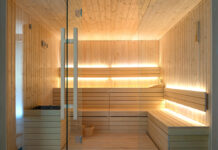In London, the trend of expanding living spaces through loft conversions continues to grow into 2024. With the city’s unique architectural character and stringent planning regulations, understanding the upcoming changes to loft conversion regulations is essential for homeowners looking to enhance their properties. This guide will provide a clear overview of the key regulatory updates affecting loft conversions, including planning permissions and building standards. This article aims to equip you with the knowledge needed to navigate these changes successfully, ensuring your loft conversion project not only adds value but also complies with the latest legal requirements.
Understanding the 2024 Loft Conversion Regulations in London
Loft conversion regulations serve a critical purpose, ensuring that any modifications to your home are safe, structurally sound, and in line with current building standards. These regulations safeguard occupants’ well-being and preserve the property’s value by enforcing compliance with safety and building codes. They encompass several key areas:
- Building Regulations: These focus on the structural stability of the loft conversion, including aspects like insulation, ventilation, and the overall safety of the construction. Ensuring the structural integrity of your loft is paramount, requiring professional assessment and the use of specific materials that comply with fire safety and thermal performance standards.
- Planning Permission: In London, planning permission for loft conversions may be necessary if modifications significantly alter the building’s exterior or exceed specific size limitations. Engaging with local planning authorities early in the project can streamline this process, ensuring that your conversion meets all required legal frameworks without impacting the surrounding community negatively.
- Party Wall Agreements: If your conversion involves work on a wall shared with neighbours, a party wall agreement will be required. This legal document outlines the nature of the work to be done and seeks to prevent disputes by ensuring all parties are informed and in agreement with the proposed changes.
- Fire Safety Regulations: The design of your loft conversion must also adhere to stringent fire safety standards. This includes the installation of escape routes and the use of fire-resistant materials to ensure that the space is safe for occupants.
Navigating these regulations is essential for a successful loft conversion in London. Compliance not only guarantees the safety and durability of the conversion but also contributes to the overall quality of living for residents. Professional advice and thorough planning are indispensable in this process, ensuring that your loft conversion aligns with 2024’s regulatory landscape.
Impact on Planning Permissions
The evolving landscape of loft conversion regulations significantly influences the planning permission process in London. As the city seeks to balance the demand for additional living space with the preservation of its historical and aesthetic character, homeowners must navigate a complex set of requirements to secure approval for their loft conversion projects.
Navigating Local Authority Requirements: The first step in obtaining planning permission involves understanding the specific requirements set forth by local authorities. This includes considerations related to the visual impact, structural integrity, and potential effects on neighbouring properties. The Planning Portal offers a comprehensive overview of general planning permissions, emphasising the importance of consulting local planning guidelines.
Permitted Development Rights (PDRs): Many loft conversions in London may proceed under Permitted Development Rights, avoiding the need for full planning permission. However, these rights are subject to limitations, especially in conservation areas or where Article 4 directions are in place, restricting certain developments. Urbanist Architecture highlights the nuances of PDRs and the necessity of obtaining a certificate of lawfulness for your project to proceed without formal planning permission.
Professional Consultation: Engaging with professionals such as architects and planning consultants can greatly facilitate the planning permission process. These experts can help navigate the intricacies of local regulations, prepare necessary documentation, and liaise with local authorities on your behalf. Resi.co.uk underscores the role of professionals in ensuring the compliance and success of loft conversion projects.
Community Impact Assessments: Part of the planning permission process may involve assessing the potential impact of your loft conversion on the surrounding community. This could include considerations related to privacy, light access for neighbours, and the overall aesthetic coherence with the neighbourhood. Professional input and detailed planning can mitigate potential objections and support a smoother approval process.
Application and Approval Process: Submitting a planning permission application requires thorough preparation and understanding of the required documents, plans, and impact assessments. The local authority’s planning department will review the application against local and national policies before granting approval. The process can vary in duration, so it’s advisable to factor this into your project timeline.
In summary, securing planning permission for a loft conversion in London involves a detailed understanding of both local and national regulations, the strategic use of Permitted Development Rights where applicable, and the engagement of professional services to ensure a compliant and successful application. Homeowners are encouraged to start the process early, allowing ample time for consultation, application preparation, and potential adjustments based on feedback from the local planning authority.
Revisions to Building Standards
As building regulations evolve, they bring changes that impact the structural, thermal, and safety standards for loft conversions. These revisions are crucial for ensuring that newly converted spaces are not only safe and structurally sound but also environmentally sustainable and energy-efficient.
Structural Integrity and Load-Bearing Capacity: Ensuring that the existing structure can support the additional weight of a loft conversion is paramount. This involves detailed assessments by structural engineers to determine the need for reinforced floors or additional support beams. Resources like the Planning Portal and specific structural engineering firms provide guidelines on how to meet these requirements.
Thermal Insulation and Energy Efficiency: New standards often include stricter requirements for insulation and energy efficiency to reduce heat loss and lower carbon emissions. This might involve using higher-grade insulation materials or innovative heating systems. Love Renovate offers insights into the specifics of insulation requirements and achieving desired U-values.
Fire Safety Enhancements: Fire safety regulations for loft conversions are designed to ensure quick and safe evacuation in case of emergency. This may include the installation of fire doors, smoke alarms, and emergency escape windows. The Federation of Master Builders outlines the fire safety considerations that must be addressed in loft conversion projects.
Sound Insulation for Noise Reduction: Soundproofing between the loft and the rooms below is essential to maintain a peaceful living environment. This includes the installation of sound-insulating materials in floors and walls to mitigate the transmission of noise.
Accessibility and Safe Egress: Building standards may also dictate the design and placement of staircases to ensure they are safe and accessible. This includes considerations for headroom, staircase width, and handrail specifications to accommodate safe and comfortable use by all occupants.
By adhering to these updated building standards, homeowners can ensure their loft conversion projects are not only compliant with current regulations but also provide a safe, comfortable, and energy-efficient living space. Engaging with professionals who are up-to-date with the latest standards is essential for navigating these complex requirements successfully.
Changes in Party Wall Agreements
Modifications to party wall agreements aim to enhance fairness and clarity between neighbours when construction affects shared boundaries. Proper handling of these agreements is vital for maintaining positive relationships and ensuring a smooth process for both parties involved.
Key Points for Diplomatic Navigation:
- Early Engagement: Start discussions early to address any potential concerns and foster goodwill.
- Formal Notice: Serve a party wall notice well in advance, detailing the planned work and its implications.
- Responses and Dispute Resolution: Neighbours have 14 days to respond. Consent allows you to proceed, but dissent initiates a formal dispute resolution process, possibly requiring a party wall award.
- Professional Assistance: In case of dissent, consider hiring a surveyor. They can help draft an agreement that protects both parties’ interests. The hiring cost typically falls on the project initiator.
- Consideration Throughout: Ensure compliance with the agreement and maintain open lines of communication to avoid disputes.
By focusing on these steps and prioritising communication and compliance, you can effectively navigate changes in party wall agreements while keeping good relations with your neighbours.
Environmental Considerations, Sustainability, and Financial Implications
Incorporating environmental sustainability into loft conversion projects is increasingly becoming a priority, driven by new regulations and a growing awareness of the need to reduce carbon footprints. These changes not only aim to make homes more energy-efficient but also have a significant impact on the financial planning and potential investment returns of such projects.
New Regulations and Sustainability Practices
Recent regulations have begun to emphasise the importance of energy efficiency and sustainability in building projects, including loft conversions. These may include requirements for better insulation, the use of renewable energy sources, and materials that have a lower environmental impact. Adapting to these regulations not only contributes to a greener planet but can also enhance the long-term value of properties by making them more energy-efficient and cost-effective to run.
Incorporating Green Practices
- Insulation: High-quality insulation is key to reducing heat loss, which can significantly lower energy bills and improve the carbon footprint of a home.
- Renewable Energy Sources: Incorporating solar panels or solar water heating systems can reduce reliance on non-renewable energy sources and may qualify for government incentives.
- Sustainable Materials: Choosing sustainable or recycled materials for the construction and interior finishes can minimise the environmental impact of the conversion.
Financial Implications and Budgeting Tips
The initial costs of integrating sustainable features into a loft conversion can be higher than traditional methods. However, the long-term savings on energy bills and the potential increase in property value can offset these initial expenses. Additionally, some regions offer grants or tax incentives for eco-friendly building projects, which can further mitigate the upfront costs.
- Investment Returns: Energy-efficient properties not only have lower running costs but are also more attractive to buyers and renters, potentially increasing the property’s market value.
- Budgeting and Planning: Incorporating environmental considerations from the planning stage can help in accurately budgeting for the project. Seeking quotes from contractors experienced in sustainable building practices is essential.
- Government Incentives: Research available government or local authority incentives for green building projects, as these can provide significant financial savings.
Conclusion
In looking ahead to the changes in loft conversion regulations for 2024, it’s clear that the landscape of home improvement and expansion is evolving rapidly, especially in London. With an emphasis on ensuring safety, structural integrity, and now, more than ever, environmental sustainability, these regulations are set to shape how homeowners approach loft conversions.
The introduction of new regulations underscores the importance of planning and collaboration with neighbours through party wall agreements, ensuring that projects not only meet current standards but also respect the rights and concerns of adjacent property owners. Furthermore, the shift towards incorporating green practices into loft conversions reflects a growing recognition of the role that residential construction plays in the broader environmental picture. By focusing on energy efficiency, sustainable materials, and potentially integrating renewable energy sources, homeowners can contribute to a more sustainable future while also reaping the benefits of reduced energy costs and increased property value.
Financially, while the upfront costs of adhering to these new regulations and integrating sustainable features may be higher, the long-term savings on energy bills and the potential for increased property value present a compelling case for investment. Homeowners are encouraged to carefully plan and budget for their loft conversion projects, considering not only the immediate costs but also the long-term financial and environmental benefits.
In conclusion, the 2024 regulations for loft conversions in London are a reflection of changing priorities in urban development, with a clear focus on sustainability, safety, and community respect. By embracing these changes, homeowners can ensure that their loft conversion projects are not only compliant with the latest regulations but also contribute to a more sustainable and energy-efficient future.
Find a Home-Based Business to Start-Up >>> Hundreds of Business Listings.
















































